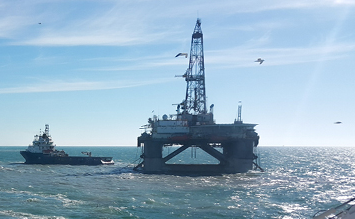The International Union of Marine Insurance (IUMI) has warned that the continued erosion of the premium base is making underwriting profitability more vulnerable to attritional losses, while all marine sectors are exposed to the increased risk of large, complex risks in 2019.
 Generally, notes the IUMI, major losses remain stable, with nat cat losses in 2018 down on 2017, despite the impacts of hurricanes Florence and Michael, and typhoon Jebi. A fire on Maersk Honam in early 2018 is expected to be the largest General Average loss in history, says the IUMI.
Generally, notes the IUMI, major losses remain stable, with nat cat losses in 2018 down on 2017, despite the impacts of hurricanes Florence and Michael, and typhoon Jebi. A fire on Maersk Honam in early 2018 is expected to be the largest General Average loss in history, says the IUMI.
The marine sector has been challenging for some time, and a reduction of the premium base over-time is driving another issue for the sector, resulting in attritional losses having a much greater impact than in the past.
“We are pleased to see a stabilisation in total losses and serious casualties and this is a clear indication of an enhanced safety culture, improved vessel design and more effective regulation across the industry. Statistics show total losses of younger tonnage (<15 years) are dramatically lower in 2014-2018 than in 2009-2013. Underwriters welcome the industry’s overall improvement in safety but also recognise that increasing size, scale and complexity of new tonnage is affecting the current risk profile.
“There is the potential for severe volatility in a conventional hull portfolio influenced by the continuing erosion of the premium base. Reduced asset values and reduced activity (in some sectors) has driven down premiums. As a result, the increased impact of attritional losses has become significant. This, coupled with occasional spike losses, is seriously affecting international underwriting results
“Going forward, our main concerns continue to be the accumulation of risks associated with large container vessels and, in particular, the risk of onboard fires. We are also focused on advances in digital technology – both in naval architecture and in vessel operations – and the ability of seafarers to effectively manage cutting edge technology and growing amounts of data. We are also likely to see increased machinery claims resulting from the 2020 sulphur limit,” said Rama Chandran, Chairman of IUMI’s Ocean Hull Committee.
The global fleet expanded by roughly 3% in 2018, but despite this, the number of total losses fell to a 20-year low. In total, only 21 losses were recorded in 2018, which is on the back of a general downward trend that’s been witnessed since 2010.
Discussing global cargo insurance, the IUMI explains that the underwriting landscape has been unprofitable for a number of years. However, on a global basis, “premiums are not technically adequate to cover losses and expenses. This is a major concern,” said Sean Dalton, Chair of IUMI’s Cargo Committee.
Adding, “Going forward, we see the main challenges will include larger and more complex risks, NAT CATs, and unknown vessel and port accumulations. We are also seeing an increasing gap in underwriters’ technical competencies. For many years, accounts have been largely underwritten and priced on loss experience with less attention paid to exposures which have now grown in size and complexity. Coverage has also broadened significantly.
“Market conditions, however, are slowly improving and underwriters are now addressing the issues of technical premium inadequacy, exposures and terms.”
Looking at offshore energy, and the IUMI notes that oil prices fluctuated in 2018, but the average $71/bbl was up 31% on 2017.
“Day rates for offshore assets such as floaters and jack-ups remain significantly below their peaks due to an ongoing supply/demand imbalance. This affects our sector as premiums are linked with asset values which are influenced by day rates. Scrappage and an uptick in usage should help ease this situation going forward, however,” said Chair of IUMI’s Offshore Energy Committee, James McDonald.
The IUMI notes that in 2018, low offshore loss activity and improved safety practices continued to reduce the overall level of attritional losses. However, this trend could reverse if losses pick up.


